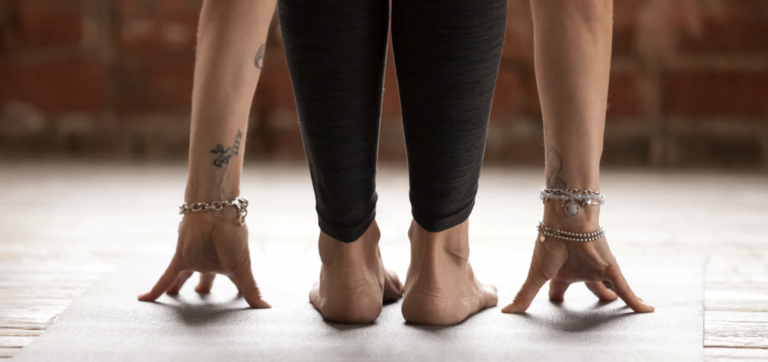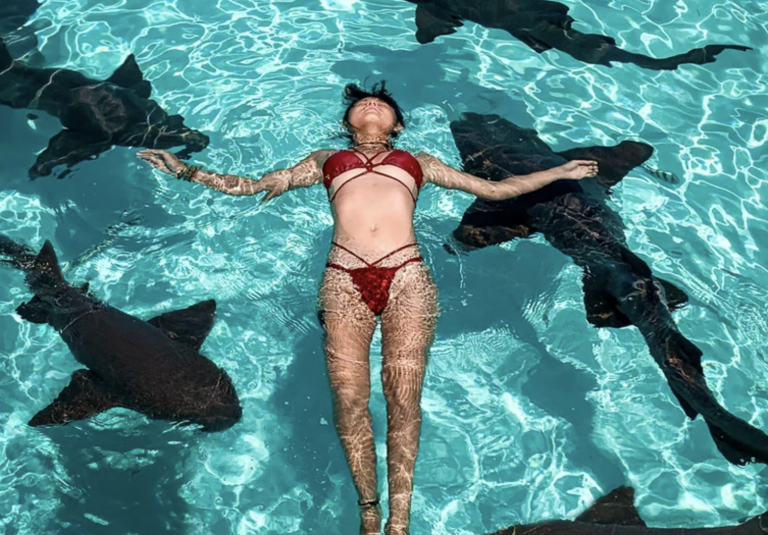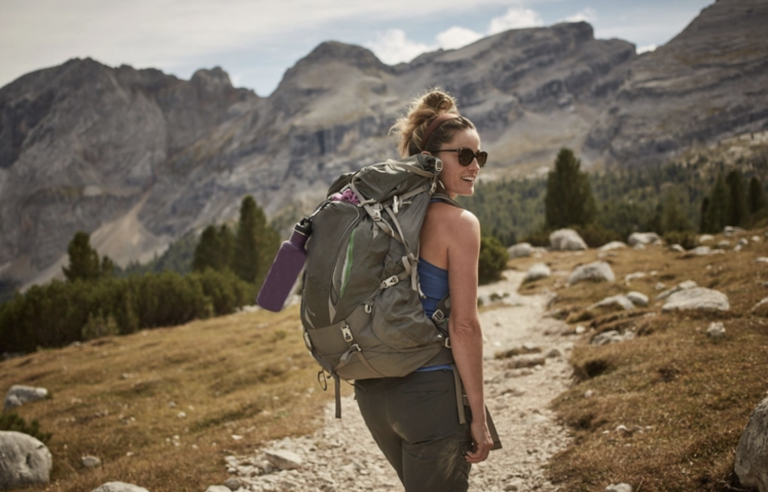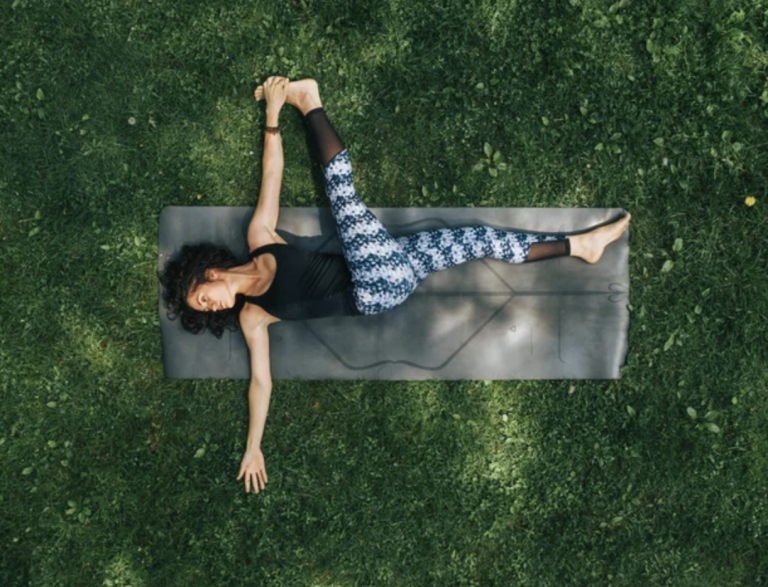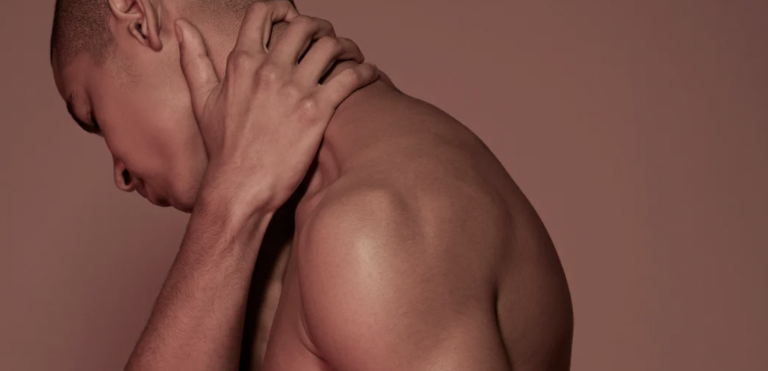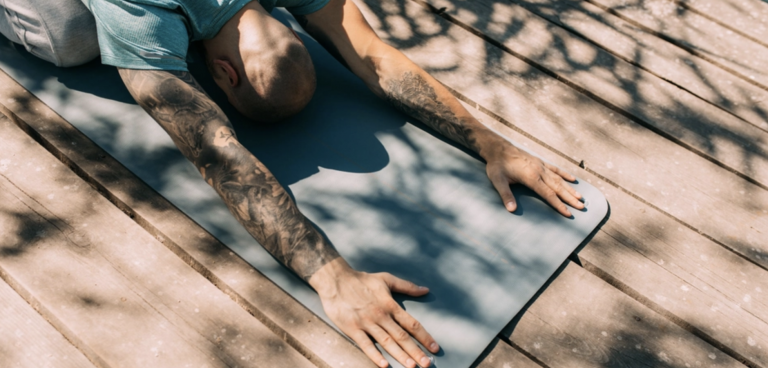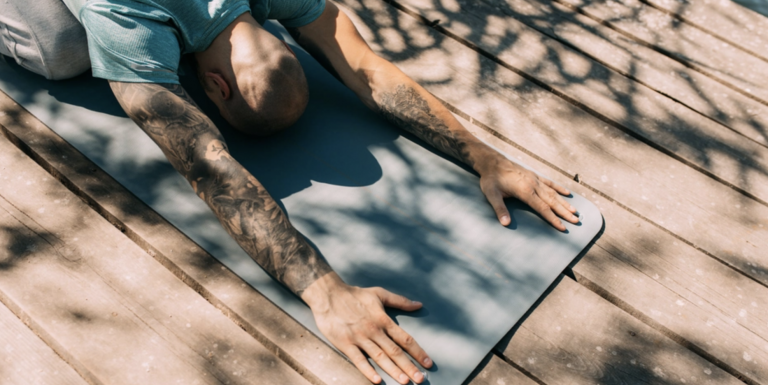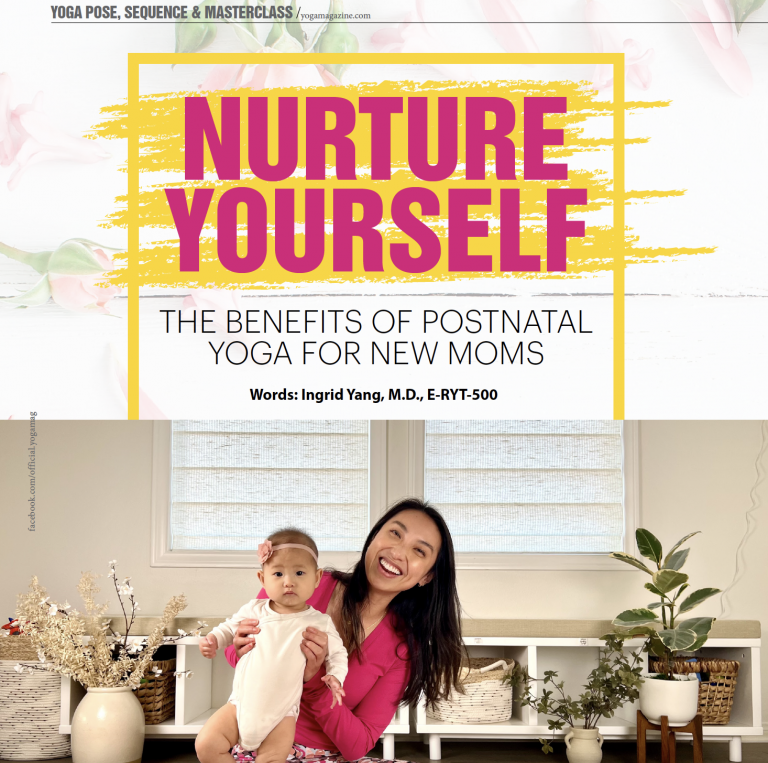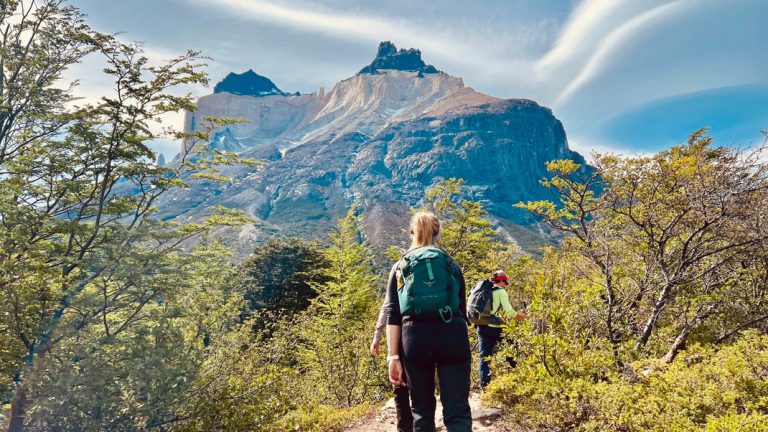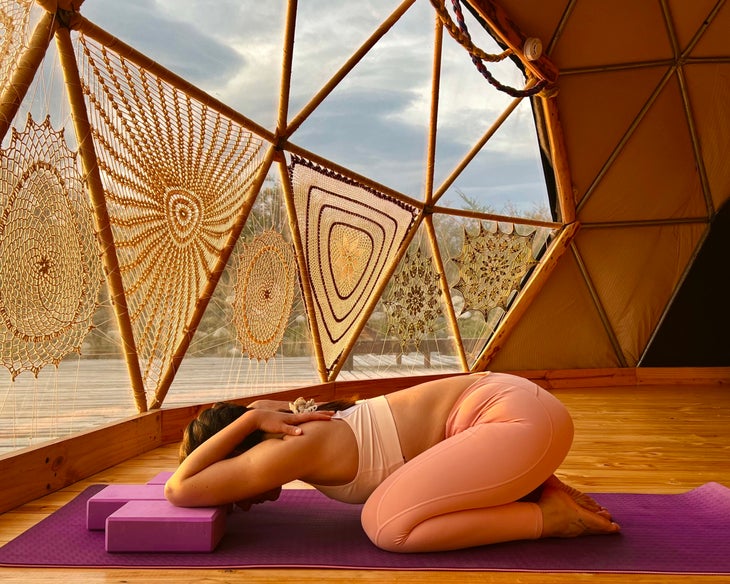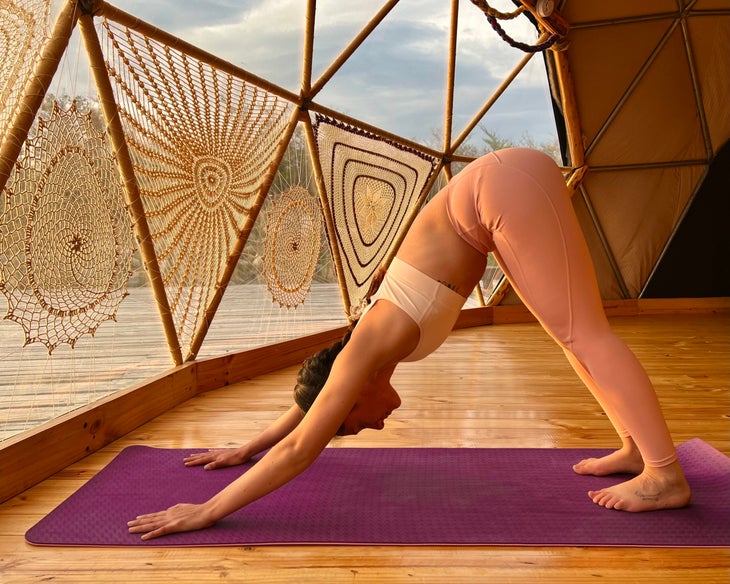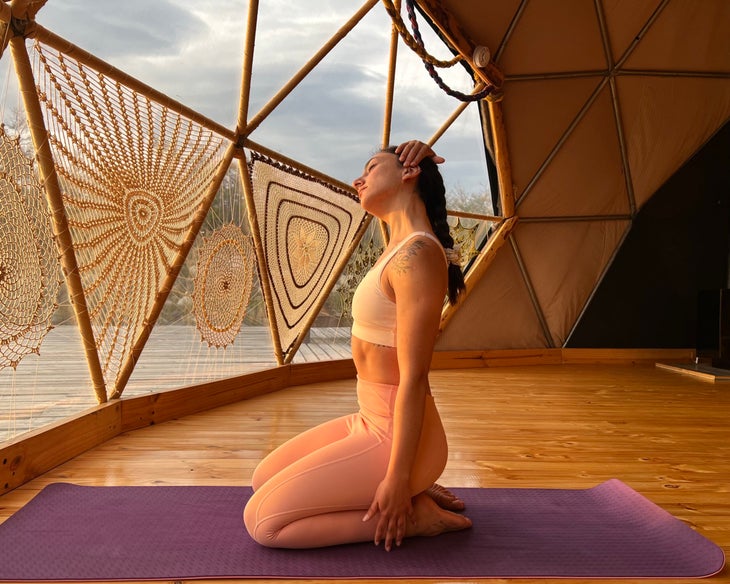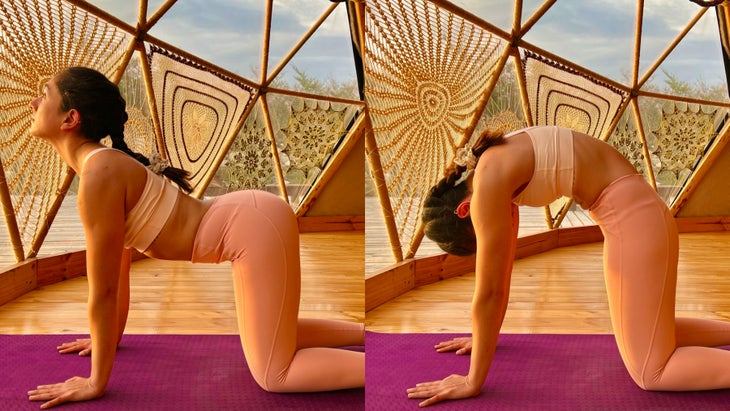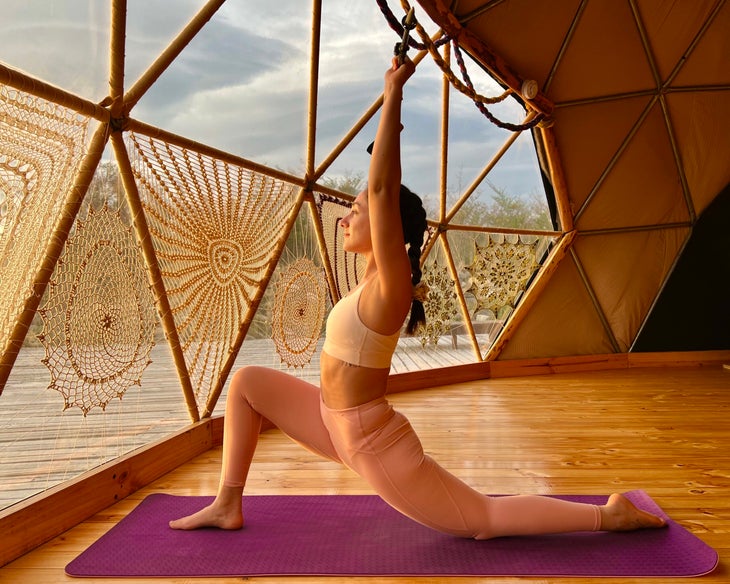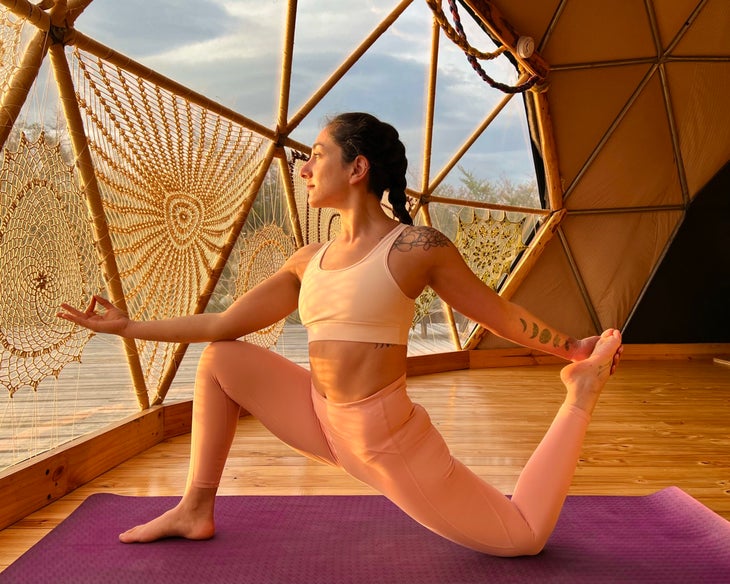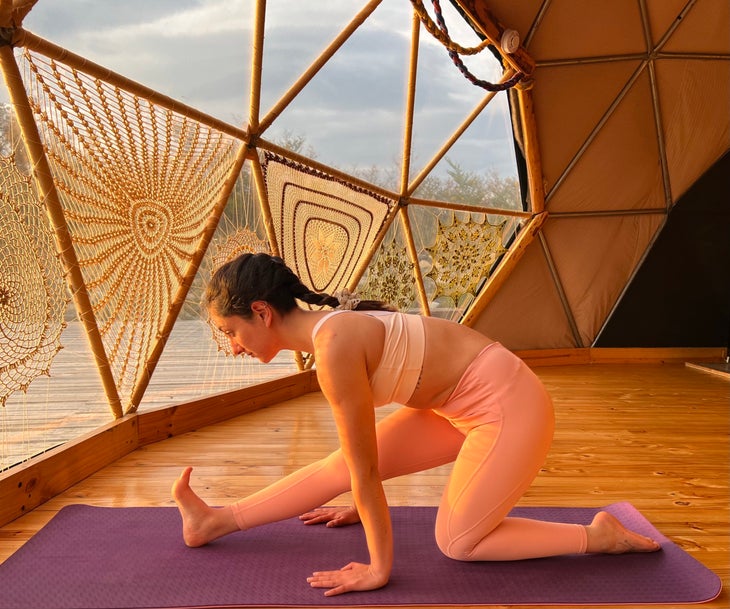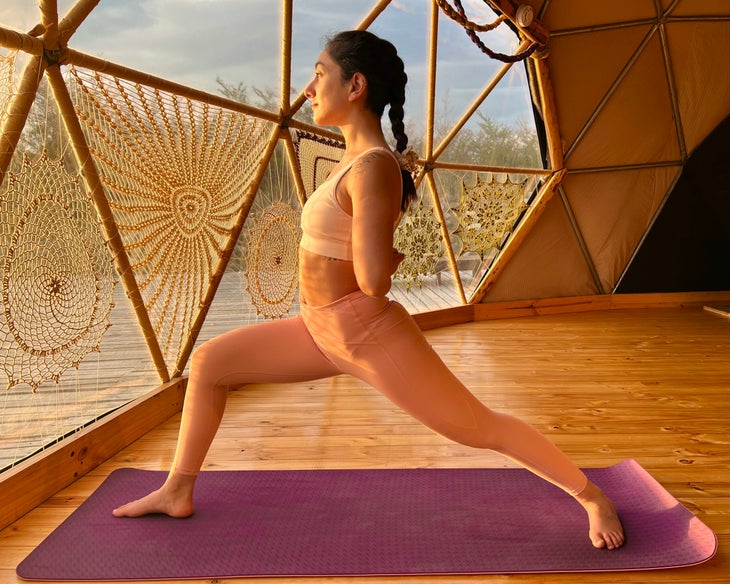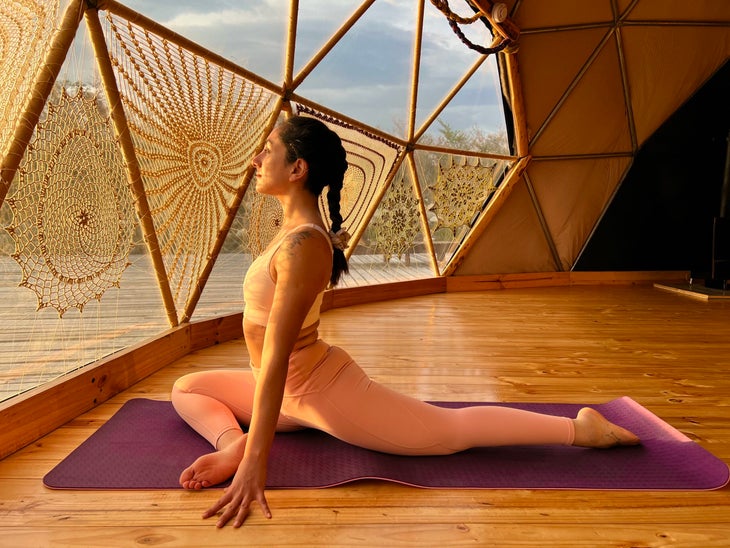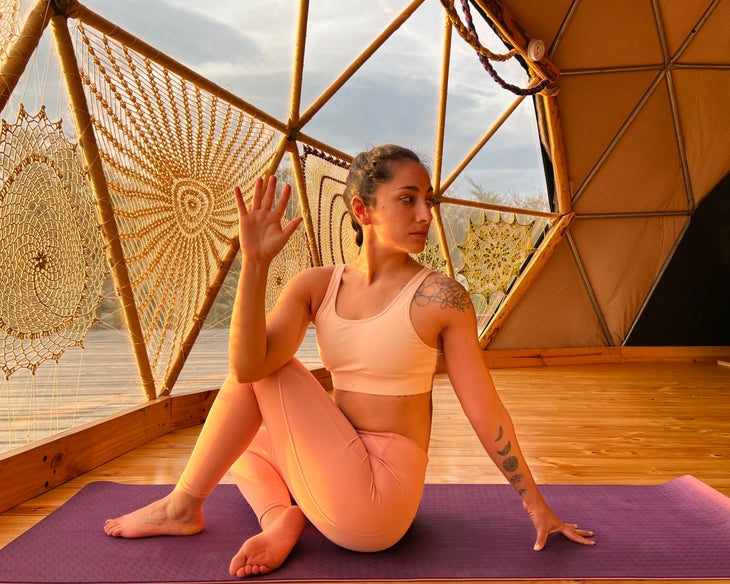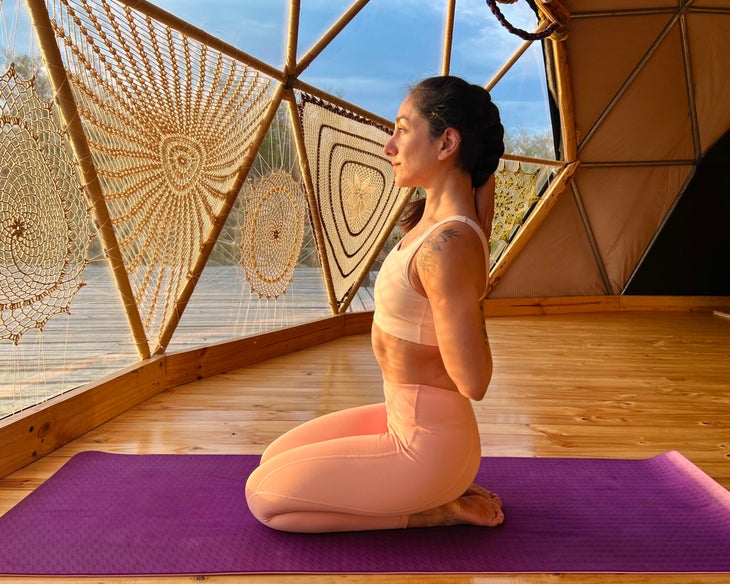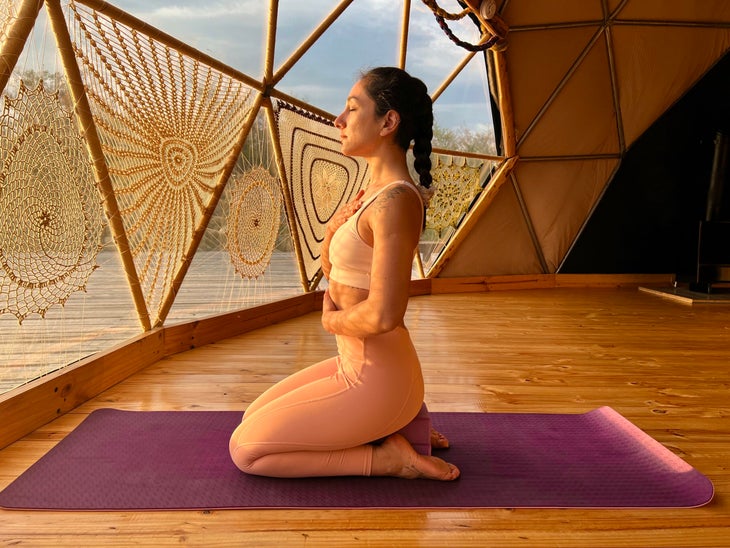Article originally posted on Outside.com. Read the original article here.
You’re busy. Between long hours at work, family demands, and social obligations, it can be difficult to squeeze a workout in. That may be why high-intensity interval training (HIIT), has become the go-to for those seeking a quick— and effective—workout. HIIT incorporates short bursts of high-intensity exercise followed by periods of rest or low activity.
The Benefits of Adding Yoga to Your HIIT Routine
HIIT is designed to “get you moving near max effort in a short period of time, working your muscles until fatigue,” explains Tyler Millican, a fitness coach at San Diego-based HIIT studio Renegade Fit. To reap its full benefits, Millican advises you to make sure your body is able to keep up with HIIT’s demands, which requires steadiness and mobility.
That’s what yoga is about: mastering control of your body through different movement patterns, which is why it pairs so greatly with HIIT, says Millican. Experts have found that incorporating yoga into your HIIT workouts can not only help you stay limber but also boost your athletic performance.
Yoga can also help increase flexibility, improve balance, and reduce the risk of injury, says Ajay Chapa, MD, a board-certified radiologist who specializes in musculoskeletal imaging. “One of the most common injuries I see resulting from HIIT workouts is overuse injuries, such as
tendonitis and stress fractures,” Chapa says. He recommends incorporating yoga into a HIIT routine to provide balance and restore the body’s natural range of motion, which can ultimately reduce the risk of these types of injuries.
Nicole Turnbow, a doctor of physical therapy and managing director at Body in Motion, agrees. In fact, Turnbow thinks that adding yoga to your HIIT workout is non-negotiable. “If time allows, you should be incorporating yoga before and after your HIIT workout; think of yoga as a warm up and cool down.”
Plus, yoga has been shown to reduce stress and anxiety, promote mindfulness, and enhance overall well-being. Turnbow recommends yoga after your workout because of the beneficial parasympathetic activation.
Are there any risks to adding yoga to a HIIT regimen? Turnbow says no. “The only risk is not incorporating enough yoga pre and post workout,” she says.
With a little help from our experts, we took their favorite HIIT-complimentary yoga poses and shared them in this yoga sequence. When incorporating yoga into your workouts, be sure to move with intention and an awareness of your breath. Remember, practicing yoga before or after your workout is preferred, but if you have to choose, practice these poses after your workout.
A Yoga Sequence for Your HIIT Workout
1. Revolved Side Lunge (i.e. “The World’s Greatest Stretch”)
Did you know that this beloved stretch is actually a variation of the yoga pose called Revolved Lunge? This pose targets all the major muscle groups and rotates your torso to free up the thoracic spine while stretching your left hip flexors and quadriceps. It can be used as a warm-up exercise before, or as a recovery exercise after, your workout. It is a great tension release for your hips and lower back.
From standing, step your left foot forward and bend your front knee, coming into a low lunge. If possible, keep your back knee off the ground and straight. Fold forward and place your right hand on the ground or a block beneath your shoulder. Reach your left arm upward and rotate your torso toward your left knee. You can also place your right elbow to the outside of your left thigh and press your palms together in front of your heart. Stay here for 3-5 breaths and switch sides.
2. Cat-Cow
This stretch is one of Turnbow’s favorite ways to warm up your mid-back, especially if it’s an area of tightness. The Cat-Cow stretch involves moving your spine through flexion and extension to stretch and release tension in the erector spinae muscles, which run along your spine, as well as your deep core muscles, such as the transversus abdominis.
Start in a Tabletop position and alternate between arching your back to lower your belly (Cow Pose) on an inhalation and rounding your spine (Cat Pose) on your exhalation in a rhythmic movement.
3. Downward-Facing Dog
This pose stretches your hamstrings, calves, and spine, and can help improve overall flexibility. By stretching the calves before a HIIT class, you can help ensure that your muscles are prepared for the physical demands of the exercise and help reduce the risk of injury. Practicing Downward-Facing Dog at the end of a workout can loosen up your hard-working legs and help them recover more quickly.
From Tabletop, tuck your toes and lift your hips up and back, straightening your arms and legs to form an inverted “V” shape. Press your hands and feet firmly into the ground and lengthen through your spine to deepen the stretch. Elongate the sides of your torso as much as possible to increase the stretch in your shoulder and hip joints. Stay here for 5 breaths. Repeat up to 3 times.
4. High Lunge
High Lunge is one of Millican’s go-to yoga poses. It helps strengthen your smaller joint-stabilizing muscles that are usually overlooked, even in well-programmed HIIT routines. “These muscles stabilize your joints in the optimal position and set the foundation when working up intensity in your HIIT,” Millican says.
From Downward-Facing Dog, step your right foot between your hands and align your knee above your ankle. Lift your torso and reach your hands toward the sky as you drop your hips slightly. This pose offers a nice stretch for your back (left) leg. You may notice your front ankle shifting back and forth to help you maintain balance, increasing strength and stability in your ankle joint. Stay here for 3-5 breaths. Lower your hands back to the floor and transition through Downward-Facing Dog to repeat on the other side.
5. Skandasana (Side Lunge)
Skandasana is one of those well-loved but underrated yoga poses. Turnbow recommends adding it to your practice as it improves hip mobility, which is often restricted in people who do a lot of high-impact exercises. Additionally, Skandasana can help stretch and strengthen the muscles of your inner thigh and hip, which are often underutilized in HIIT workouts. If you have especially tight hips, practice a variation of this intense pose.
From a low squat position, center your body weight over your right foot and extend your left leg laterally to your side. You can keep your foot flat on the mat or rotate your left knee and foot upward and anchor into your left heel. Place your hands in a prayer position at your heart, or on the ground for balancing support. Optionally, place blocks under your hands for additional balance support. Stay here for several breaths before repeating on the other side.
6. Cobra Pose
Millican also recommends Cobra Pose for its focus on posture, breath, and as a way to overcome fatigue. This pose helps strengthen your spine and open up your chest, shoulders, and abdominal muscles. It also stretches the tops of your feet, ankles and shins.
Start lying on your belly with your hands next to your chest and your feet hip-distance apart. Press into your hands and start to straighten your arms, lifting your chest into Cobra Pose. Roll your shoulders back and lift your sternum as you extend the crown of your head toward the sky. Engage your quadriceps and press strongly into the tops of your feet. Stay here for 3 breaths then lower gently. Repeat up to 5 times.
7. Pigeon Pose
Turnbow recommends Pigeon Pose, especially after your workout, to alleviate tension in your hips and lower back, which are common areas of tightness following HIIT workouts.
Start in a plank position, then bend your right knee and move it forward behind your right wrist. Rotate your right knee outward and bring your right ankle toward your left wrist. Extend your left leg straight behind you with the top of your foot on the ground. Keep your hips level. Remain upright or lower down onto your forearms and breathe deeply. Stay here for 5 breaths, then repeat on the other side.
8. Child’s Pose
“I’m a big fan of Child’s Pose,” says Chapa. The quieting pose stretches your hips, thighs, and ankles as well as your spine, shoulders, and neck.
From a kneeling position, bring your big toes together to touch and widen your knees as far as is comfortable. Lower your hips toward your heels. Rest your arms alongside your body or reach them out as far as is comfortable in front of you. Rest your forehead on the ground or a folded towel and relax into the pose, taking slow, deep breaths. Soften your neck, shoulders, and hips and stay here for several breaths, or as long as feels comfortable.

